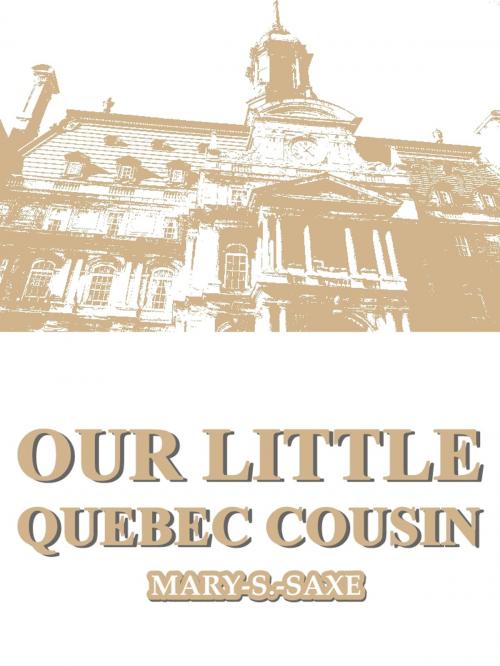Our Little Quebec Cousin
Nonfiction, History, Americas, North America, Travel, United States, Biography & Memoir, Historical| Author: | Mary S. Saxe | ISBN: | 1230000261227 |
| Publisher: | The Page Company | Publication: | August 19, 2014 |
| Imprint: | Language: | English |
| Author: | Mary S. Saxe |
| ISBN: | 1230000261227 |
| Publisher: | The Page Company |
| Publication: | August 19, 2014 |
| Imprint: | |
| Language: | English |
Example in this ebook
The Province of Quebec covers an area of over one hundred thousand square miles, and is the largest province in all the Dominion of Canada. The latter country is sometimes called British North America, but this particular province is very French indeed.
The persistency of French nationality in Canada is remarkable. The formal guarantees of the Treaty of Paris and the Quebec Act, that language, religion, and laws should be preserved, undoubtedly has saved Quebec from extinction by conquest.
This great province is bounded on the north by Labrador and the Gulf of the St. Lawrence, and on the south by New Brunswick and the States of Maine, New Hampshire and Vermont and New York.
The great St. Lawrence river flows through its entire length, and is navigable for ships as far as the city of Quebec; while great ocean-going liners come from the Old World and up this river as far as the city of Quebec, and those of not more than five thousand tons continue up the river as far as Montreal. This latter city is Canada's largest and most important settlement.
The city of Quebec is the capital of the province from which it derives its name, and once, long years ago, it was the capital of all Canada, and is still known as "The ancient capital."
It is certainly a very picturesque part of the New World, and not the least interesting are the French Canadian people, descendent of the early voyageurs who came to this corner of the globe as early as the year 1535 A. D. One still finds in lower Canada the same spirit that kept up the fight for the Fleur de lis long after the "few acres of snow" had been abandoned by the French King, Louis Fourteenth.
To be continue in this ebook................................................................................................................
Example in this ebook
The Province of Quebec covers an area of over one hundred thousand square miles, and is the largest province in all the Dominion of Canada. The latter country is sometimes called British North America, but this particular province is very French indeed.
The persistency of French nationality in Canada is remarkable. The formal guarantees of the Treaty of Paris and the Quebec Act, that language, religion, and laws should be preserved, undoubtedly has saved Quebec from extinction by conquest.
This great province is bounded on the north by Labrador and the Gulf of the St. Lawrence, and on the south by New Brunswick and the States of Maine, New Hampshire and Vermont and New York.
The great St. Lawrence river flows through its entire length, and is navigable for ships as far as the city of Quebec; while great ocean-going liners come from the Old World and up this river as far as the city of Quebec, and those of not more than five thousand tons continue up the river as far as Montreal. This latter city is Canada's largest and most important settlement.
The city of Quebec is the capital of the province from which it derives its name, and once, long years ago, it was the capital of all Canada, and is still known as "The ancient capital."
It is certainly a very picturesque part of the New World, and not the least interesting are the French Canadian people, descendent of the early voyageurs who came to this corner of the globe as early as the year 1535 A. D. One still finds in lower Canada the same spirit that kept up the fight for the Fleur de lis long after the "few acres of snow" had been abandoned by the French King, Louis Fourteenth.
To be continue in this ebook................................................................................................................















